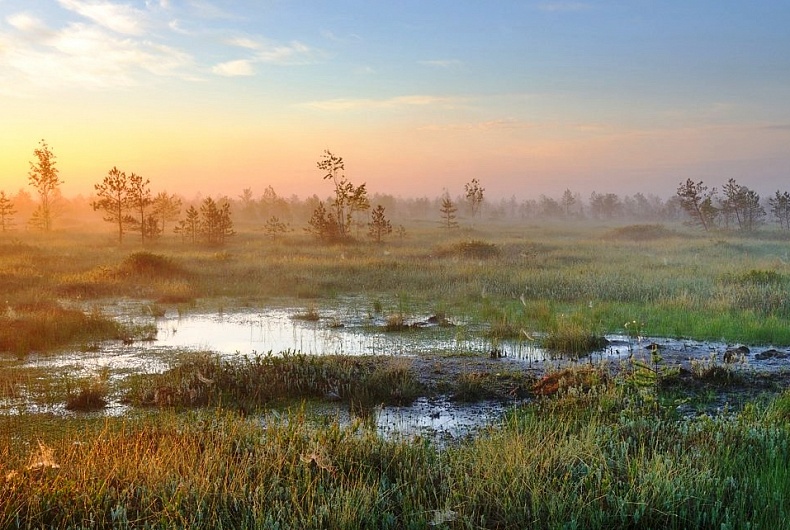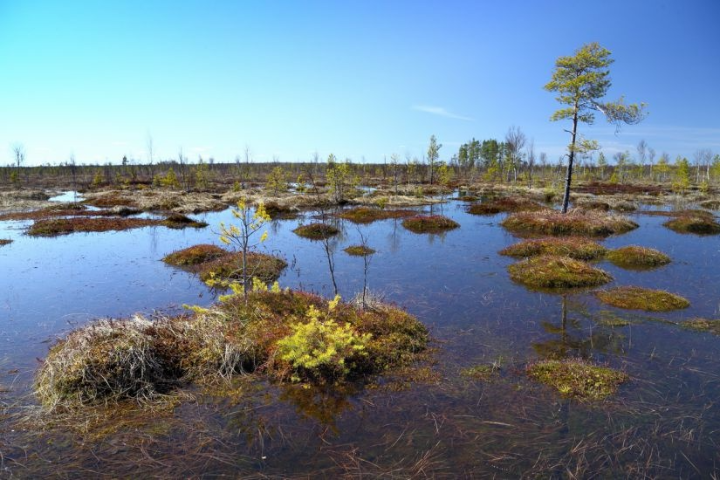World Wetlands Day

“World Wetlands Day” has been celebrated around the world since 1997. The date for celebrating this day was not chosen by chance: it was on this day, February 2, 1971, that the Convention on Wetlands was signed in the Iranian city of Ramsar (Mazandaran province). This document is better known as the Ramsar Convention. The Convention on Wetlands was signed to protect wetlands of international importance (primarily as waterfowl habitat).
As of 2024, 150 states were already parties to this convention. One of the conditions for joining the Ramsar Convention is the creation of at least one “Ramsar site” on the territory of the country that wishes to join it.
Currently, more than 2,400 wetlands around the world, covering an area of more than 250 million hectares, are included in the Ramsar List of Wetlands of International Importance. The Convention on Wetlands is an intergovernmental treaty that aims to conserve and wisely use wetlands through local, regional and national action and international cooperation as a contribution to achieving sustainable development worldwide.
Activities dedicated to International Wetlands Day, through various events, aim to draw the attention of the public and the leadership of various countries to the need to respect the habitat of waterfowl and the importance of wetlands in the ecosystem of planet Earth
Wetlands include a wide range of habitats, including marshes, floodplains, rivers and lakes, coastal areas occupied by salt marshes and mangroves, submerged marine meadows, coral reefs and marine areas no more than six meters deep at low tide, as well as anthropogenic facilities, including wastewater ponds and reservoirs.
Wetlands are of utmost importance to people and nature, given the enduring value of these ecosystems and the benefits and services they provide, including conservation, climate, environmental, social, economic, scientific, educational, cultural, recreational and aesthetic contributions to ensure sustainable development and human well-being.
Although they occupy about six percent of the land surface, wetlands are home to about 40 percent of all flora and fauna species. Wetland biodiversity is important for the health, food, tourism and labor sectors. Wetlands are vital to humans, other ecosystems and our climate by regulating water resources. More than a billion people around the world depend on wetlands for their livelihoods.
The theme of the Day in 2024 is Wetlands and Human Well-Being. The Day's theme aims to highlight how all aspects of human well-being are linked to the health of the world's wetlands - physical, mental and environmental.
Wetlands are among the ecosystems with the highest rates of decline, loss and degradation. As a result of direct and indirect factors such as rapid population growth, unsustainable production and consumption and associated technological development, and the negative impacts of climate change, current negative trends in global biodiversity and ecosystem functions are projected to continue.
Wetlands are disappearing three times faster than forests. Since 1970, 35 percent of the world's wetlands have been lost. Human activities leading to wetland loss include: drainage for agriculture and construction, water and soil pollution, overfishing and overexploitation of resources, the spread of invasive species of flora and fauna, and climate change.
A key challenge to wetland conservation is to change the perception of wetland areas to encourage governments and communities to care for and prioritize wetlands.
All ecosystem services provided by wetlands are difficult and impossible to quantify. However, the damage from damaged ecosystems is obvious. Global climate change, the risk of disease spread, poverty, destruction of biological diversity - all this threatens the existence of life on Earth. For the common future of the entire planet, it is necessary not only to preserve what exists, but also to restore it. In particular, restoration of water and wetlands.
The wetlands of Tajikistan are also a constant object of attention for scientists. In the Republic of Tajikistan, 15 wetlands have been identified, 5 of them, lakes Karakul, Shorkul, Rangul, Zorkul, the water area of the Tigrovaya Balka nature reserve and the Kairakkum reservoir, the area of which is more than 100 hectares. included in the list of Ramsar sites of global significance. The country's rivers, lakes and swamps are under constant control of the Committee for Environmental Protection under the Government of the Republic of Tajikistan. Every year, dedicated to Wetlands Day, the Committee for Environmental Protection organizes seminars, conferences and environmental events on the protection and restoration of wetlands in the city of Dushanbe and other regions of the country.
Issues of water quality, the state of rare flora and fauna, strategies for sustainable management of water resources, protection and restoration of damaged ecosystems are discussed at national and international scientific conferences. Instructions and articles on all issues of protection, restoration and rational use of wetlands are regularly published in special publications of the Committee.

.png)
.png)









